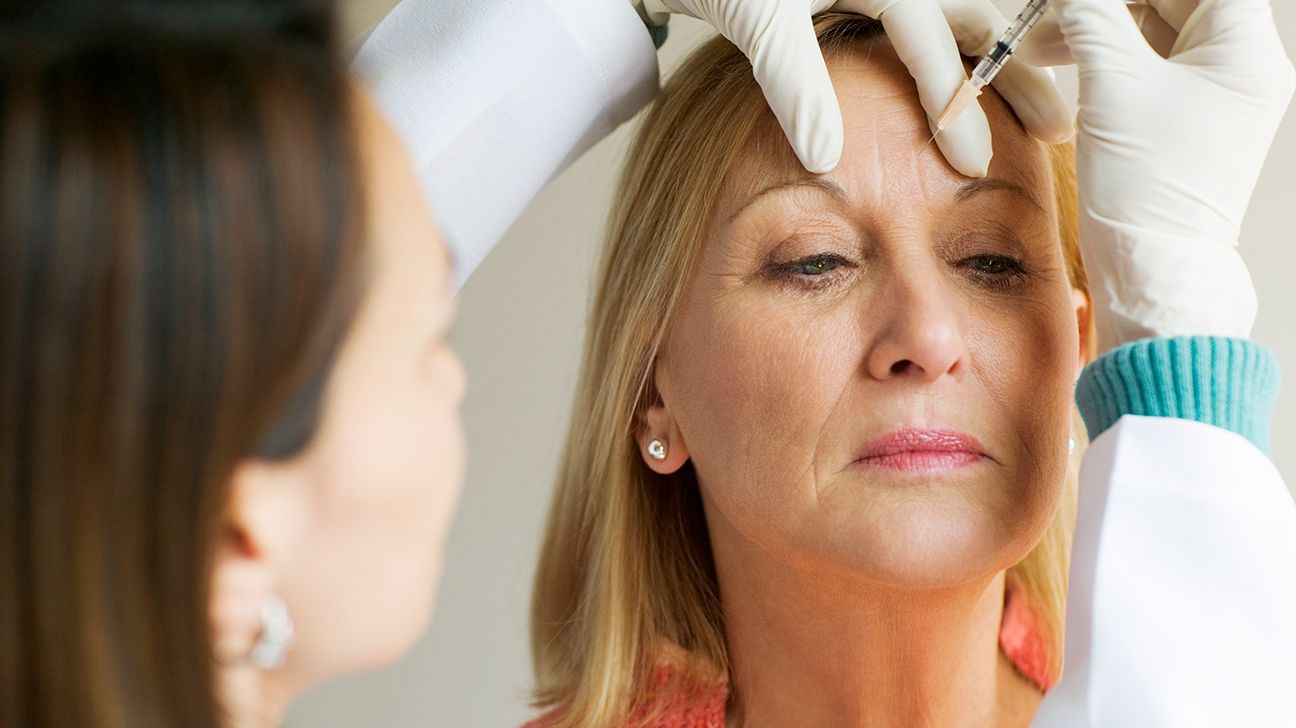The recommended dose of Botox to help with migraine prevention is 155 units given in a series of 31 injections. These injections are typically given in the back of your neck, the area near your temples, and your forehead.
Botox is a prescription drug used to help prevent headaches in adults with chronic migraine. (It’s not approved for this condition in children under the age of 18 years.) For this use, you’ll likely receive Botox injections every 3 months.

Botox comes as a powder in single-use vials that’s mixed with liquid to make a solution. This solution is given as injections into seven different muscle areas of your neck and head by a healthcare professional. They’ll inject 155 units into a total of 31 sites in your neck and head.
The healthcare professional will inject the medication into multiple sites in each muscle area. These sites include:
- above your ear, behind each temple
- behind each ear
- in your lower forehead near the inner edge of each eyebrow
- in your lower forehead just above your nose
- above each eye, in the middle of your forehead
- between your neck and shoulder on both sides
- near the back base of your skull on both sides
You’ll likely receive these injections every 12 weeks. Some people begin to notice a reduction in migraine headaches 2 to 4 weeks after their first series of Botox injections. However, it may take two series of injections and up to 6 months before you feel the full benefits of this medication.
While Botox may decrease the number and duration of migraine attacks you experience, it will not entirely stop your headaches.
The Food and Drug Administration (FDA) has not approved Botox to help prevent chronic (long-term) tension headaches (also called stress headaches). But healthcare professionals sometimes prescribe Botox off-label to help with this condition. (With off-label use, a drug is prescribed for a condition it hasn’t been approved to treat.)
Chronic migraine — which Botox is approved to treat — is defined by headaches that last at least 4 hours and occur 15 or more days per month. (Botox is not prescribed to help prevent symptoms of episodic migraine, which happen 14 or fewer days each month.)
Tension headaches are considered chronic if they occur 15 or more days per month for 3 or more months in a row.
Unlike migraine headaches, tension headaches tend to affect both sides of your head and can occur with neck or shoulder stiffness. Tension headaches don’t usually cause nausea, while migraine headaches do. And people experiencing tension headaches may be more sensitive to sound and light.
Talk with your doctor or check out this headache article to learn more about how various types of headaches and their treatment options compare.
Botox injections for migraine headaches are not likely to affect the appearance of your face or reduce wrinkles. Botox only relieves pain in the nerves of the muscle groups where it’s injected. But it’s possible that your forehead could look a little smoother after Botox injections for migraine treatment, considering the location of certain injection sites.
It’s also possible for Botox to cause unwanted facial side effects, such as drooping eyelids, but these are usually temporary. Check out this Botox side effects article to learn about other potential side effects of this medication.
If you’d like to temporarily reduce lines and wrinkles on your face, ask a healthcare professional about Botox Cosmetic. It contains the same active ingredient (onabotulinumtoxinA) as Botox, but it’s given in lower doses and injected into different sites.
If you have questions about Botox for headache prevention or wrinkle reduction, talk with your doctor.
Disclaimer: Healthline has made every effort to make certain that all information is factually correct, comprehensive, and up to date. However, this article should not be used as a substitute for the knowledge and expertise of a licensed healthcare professional. You should always consult your doctor or another healthcare professional before taking any medication. The drug information contained herein is subject to change and is not intended to cover all possible uses, directions, precautions, warnings, drug interactions, allergic reactions, or adverse effects. The absence of warnings or other information for a given drug does not indicate that the drug or drug combination is safe, effective, or appropriate for all patients or all specific uses.




